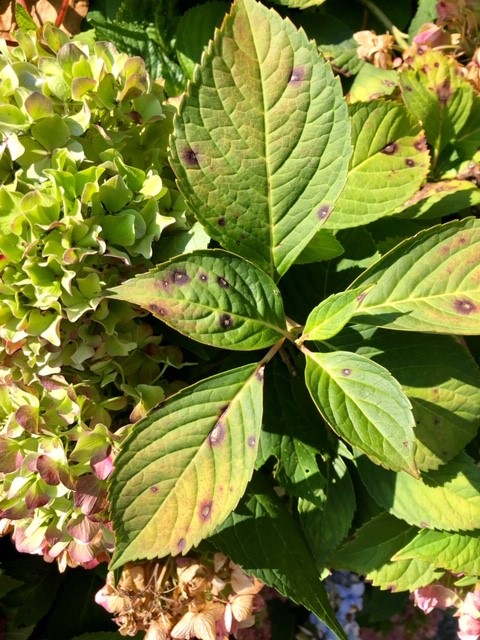Indicators on Hydrangea Leaves Turning Yellow You Should Know
Wiki Article
The Greatest Guide To Hydrangea Leaves Turning Yellow
Table of ContentsHow Hydrangea Leaves Turning Yellow can Save You Time, Stress, and Money.5 Easy Facts About Hydrangea Leaves Turning Yellow ExplainedThe smart Trick of Hydrangea Leaves Turning Yellow That Nobody is DiscussingExamine This Report about Hydrangea Leaves Turning Yellow
Hydrangea plants are understood for their beautiful blossoms, however in some cases their leaves can turn yellow. This is usually an indicator that something is incorrect and the plant requires your help. There are numerous feasible causes of yellow fallen leaves on Hydrangeas, and fortunately a lot of them are easy to repair. Below we'll cover the most typical root causes of Hydrangea leaves transforming yellow and how to fix them.Hydrangea leaves transforming yellow can be a cause for worry. Hydrangea leaves typically turn yellow when the plant is overwatered.
When the roots of a plant are immersed in water for extended periods, they start to asphyxiate and rot. This process cuts off the origins' oxygen supply, creating the fallen leaves to turn yellow and eventually pass away. Overwatering can also cause various other problems such as leaf decrease, origin damage, and fungal development.
If you believe your Hydrangea is overwatered, the best solution is to allow the soil dry entirely prior to watering once again. It's additionally a great concept to examine the drainage of your pot or garden bed and make certain that water is not merging around the plant's origins. Hydrangea plants need well-drained soil to flourish.
8 Easy Facts About Hydrangea Leaves Turning Yellow Described
You need to also make sure that you are not sprinkling your Hydrangea too often. Watering when a week must be adequate, and regularly if the weather condition is warm and completely dry. Hydrangea leaves can also transform yellow if the plant is not obtaining sufficient water. This happens when the plant does not get enough water, and the soil begins to dry.
This is called "fertilizer melt," It happens when the plant's origins are subjected to excessive plant food. The origins can't take in all of the nutrients and come to be damaged. This damage causes the leaves to transform yellow and ultimately pass away. Various other signs of plant food burn include brownish or yellow leaves, wilting, and stunted growth.
This will help get rid of any kind of excess fertilizer from the roots of the plant. It's additionally a great idea to lower the quantity of plant food you are using.
What Does Hydrangea Leaves Turning Yellow Do?
If your Hydrangea is plagued with bugs, dealing with the plant with discover this neem or horticultural oil is the ideal solution. It's likewise excellent to eliminate any kind of afflicted leaves from the plant (Hydrangea Leaves Turning Yellow).
Hydrangea leaves can likewise transform yellow if the temperature stresses the plant. The fallen leaves of the plant will certainly turn yellow and begin to drop off.
If the temperature level emphasizes your Hydrangea, you need to move the plant to an area where it will certainly be safeguarded from the extreme cool or warmth. You can likewise attempt to provide the plant with go right here some partial color if exposed to direct sunshine. You can likewise attempt adding mulch around the plant base to help regulate the temperature.
The Greatest Guide To Hydrangea Leaves Turning Yellow
When the plant's roots are submerged in water for too long, they begin to rot. One of the most usual origin rot signs and symptoms is yellowing fallen leaves, as the fungus stops the origins from absorbing nutrients from the soil.Various other indicators of root rot consist of stunted growth, wilting, and leaf decline. Inspect the roots of your Hydrangea if it has origin rot. If they are black or brown, then they are probably rotten. If some healthy roots are left, you can try to conserve the plant by replanting find more info it in a brand-new pot with fresh soil.
Water the plant very carefully, seeing to it not to overwater it. If your Hydrangea is heavily impacted by root rot, beginning with a brand-new plant is best. All-natural reasons can additionally cause yellow hydrangea leaves. One of the most common reason is the plant's age. As Hydrangeas age, their fallen leaves will slowly turn yellow and brownish before falling off the plant.
You can aid the plant by guaranteeing it is obtaining adequate water and nutrients. You can also mulch around the plant base to help it preserve wetness. There are a number of reasons hydrangea leaves might turn yellow and diminish. Hydrangea Leaves Turning Yellow. One opportunity is that the plant is not getting adequate water.
Report this wiki page